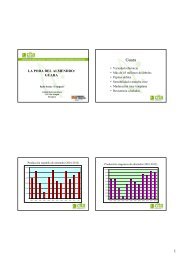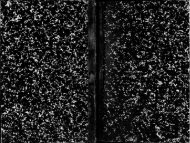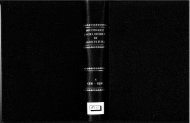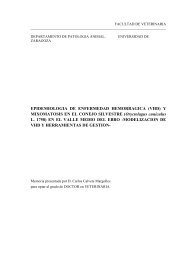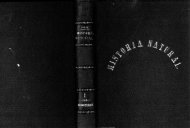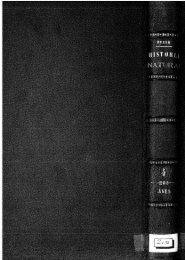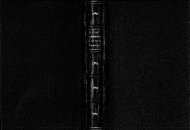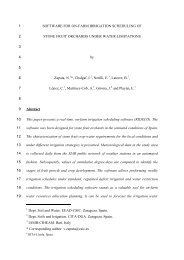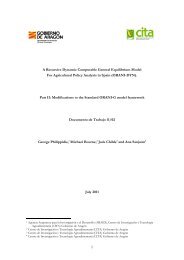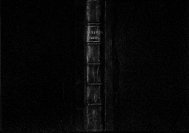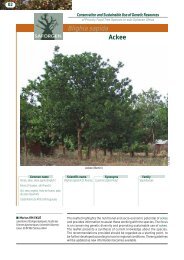- Page 7:
COLECCIÓN ENCICLOPÉDICA ПК MANU
- Page 13 and 14: — 3 — se multiplica por medio d
- Page 15 and 16: — 5 — las especies de este gén
- Page 17 and 18: — 7 — •'C. incisa DC. Áster
- Page 19 and 20: — 9 — rillas en espigas corlas
- Page 21 and 22: — и — С. férrea Planch. —
- Page 23 and 24: — 13 — ble por el verdor de sus
- Page 25 and 26: — 15 — ciarles las hojas de cua
- Page 27 and 28: — 17 — rece en verano. La C. er
- Page 29 and 30: — 19 — C. Campanula I,, fd.—C
- Page 31 and 32: — 21 — Canelo de Ceilan.—Cinn
- Page 33 and 34: — 23 — Capuchina de Cádiz.—I
- Page 35 and 36: — 25 — Cardo borriquero de Sevi
- Page 37 and 38: — 27 — С. olivaformis Nutt.—
- Page 39 and 40: — 29 — Castaño caballuno comú
- Page 41 and 42: — 31 — CEANOTÜS (Ramneas). C.
- Page 43 and 44: — 33 — Cedro de Méjico.—Cham
- Page 45 and 46: — 35 — que mayores, flores pequ
- Page 47 and 48: — 37 — rica septentrional con h
- Page 49 and 50: — 39 — sis L.—Centropogon deS
- Page 51 and 52: — 41 — vadas, redondeadas, algo
- Page 53 and 54: - 43 - hojas aovadas, y flores gran
- Page 55 and 56: — 15 — C. grandiflorus Mill. Ca
- Page 57 and 58: — 47 — Cerezo enano. — Cerasu
- Page 59 and 60: — 49 — y flores de color azufra
- Page 61 and 62: — 51 — como pinadas después de
- Page 63: — 53 — hojas grandes, casi sent
- Page 67 and 68: — 57 — acorazonadas. Arbusto de
- Page 69 and 70: — 59 — cinco hojillas, y flores
- Page 71 and 72: — 61 — Ciprés macho. — Cupre
- Page 73 and 74: — 63 — Cítiso. Véase CYTISUÍ
- Page 75 and 76: - 65 — Clavel de la China.—Dian
- Page 77 and 78: - 67 - hojas pinadas y flores peque
- Page 79 and 80: — 69 — C. Hendersonii Horl.—C
- Page 81 and 82: — 71 — das, y flores de color d
- Page 83 and 84: — 73 — la isla de Madera con ho
- Page 85 and 86: — 75 — das, moradas. Multiplíc
- Page 87 and 88: — 77 — jas con dos semillas. De
- Page 89 and 90: — 79 — Colpalma de las Antillas
- Page 91 and 92: — 81 — Colymbea Bidwillii Auct.
- Page 93 and 94: — 83 — indígena, con hojas esp
- Page 95 and 96: — 85 — C. reflexa Planck. Dracc
- Page 97 and 98: — 87 — circinnata L'herit, el C
- Page 99 and 100: — 89 — Corregüelas Véase CONV
- Page 101 and 102: — 91 — de la América septentri
- Page 103 and 104: — 93 — Wall, el C. laxiflora Li
- Page 105 and 106: — 95 — C. inuscosa L.—Telraph
- Page 107 and 108: - 97 - ceoladas , casi permanentes
- Page 109 and 110: — 99 — í. speciosum L. — Val
- Page 112 and 113: — 102 — tamaño de una gruesa c
- Page 114 and 115:
— 104 — extremidades de los ram
- Page 116 and 117:
— 106 — cuenlrau en los jardine
- Page 118 and 119:
— IOS — C hederá) folium Ait.
- Page 120 and 121:
— 110 — billo. Es fácil de cul
- Page 122 and 123:
— 112 — guardarse en estufa tem
- Page 124 and 125:
— 114 — grandes, amarillas, con
- Page 126 and 127:
—116 — riedades mas ó menos ap
- Page 128 and 129:
— 118 — Willd.—Damnara orient
- Page 130 and 131:
- 120 - templada. Varía de tamaño
- Page 132 and 133:
— Í22 — rillo rojizo, estriada
- Page 134 and 135:
— 124 — el 1). azurcum llort.,
- Page 136 and 137:
— 126 — especies, aunque en rac
- Page 138 and 139:
— 128 — ó se desmejoran antes,
- Page 140 and 141:
— 130 — mo las de la minutisa,
- Page 142 and 143:
— 132 — Diclamo crético.—Ori
- Page 144 and 145:
— 134 — Dillenia scanclens Will
- Page 146 and 147:
— 136 — medio de semillas sembr
- Page 148 and 149:
— 138 — empizarradas, pestaños
- Page 150 and 151:
— 140 — rial con hojas grandes,
- Page 152 and 153:
— 142 — lis Dne., la D. magnifi
- Page 154 and 155:
— 144 — case por medio de semil
- Page 156 and 157:
- 146 - Planta perenne de la Améri
- Page 158 and 159:
— 148 — das, verdes por encima,
- Page 160 and 161:
- 150 - L. — Equinacea purpúrea.
- Page 162 and 163:
— 152 — E. Eyriesii Zuce. Echin
- Page 164 and 165:
— 154 — ELJUGNUS (Elcagneas). E
- Page 166 and 167:
Enea.—Thypha — 156 — angustí
- Page 168 and 169:
— 158 — E. distaehya L. — Bel
- Page 170 and 171:
— 160 — de flores amarillas. Fl
- Page 172 and 173:
— 162 — brácleas blancas y ver
- Page 174 and 175:
— 164 — y estén al abrigo de l
- Page 176 and 177:
—166 — blanco, hojas temadas ó
- Page 178 and 179:
- 168 - ilo ramoso , hojas abiertas
- Page 180 and 181:
— 170 — 2. Hojas cualernadas. E
- Page 182 and 183:
— 172 — cinea Hort., E. vestita
- Page 184 and 185:
— 174 — ! Erizo macho. — Mamm
- Page 186 and 187:
— 176 — ñon espinoso de las An
- Page 188 and 189:
— 178 — Espadaña común.—Thy
- Page 190 and 191:
— 180 — ro. Árbol de Nueva-Hol
- Page 192 and 193:
— 182 — mente por medio de esta
- Page 194 and 195:
— 184 — en estufa caliente, y s
- Page 196 and 197:
— 186 — Ai-buslo de la China co
- Page 198 and 199:
- 188 — Lodd., el F. cris lata Lo
- Page 200 and 201:
— 190 — F. macrophylla Desf.
- Page 202 and 203:
— 192 — Flor del cáli%.—Cere
- Page 204 and 205:
— 194 — Flor de la sanare.—f
- Page 206 and 207:
— 196 — bulbillos cónicos. Deb
- Page 208 and 209:
— 198 — Has, y una terminal, to
- Page 210:
— 200 — acampanadas, violado-az
- Page 213 and 214:
— 203 — dicalos, acorazonadas,
- Page 215 and 216:
— 205 — violadas, purpúreas ó
- Page 217 and 218:
— 207 — en otoño é invierno,
- Page 219 and 220:
— 209 — vaccinio. Arbusto del P
- Page 221 and 222:
— 211 — reunidas eu las extremi
- Page 223 and 224:
— 213 — das, puntiagudas , y fl
- Page 225 and 226:
— 215 — ño y abundancia de sus
- Page 227 and 228:
— 217 — pinalifidas, y flores a
- Page 229 and 230:
— 219 — preferible á él por s
- Page 231 and 232:
— 221 — el mes de Octubre, abri
- Page 233 and 234:
— 223 — rosa, hojas lanceoladas
- Page 235 and 236:
— 225 — Gobernadora. — Zygoph
- Page 237 and 238:
— 227 — GONIOLIMON (Plumbagínc
- Page 239 and 240:
— 229 — GORTEUIA. Véase GAZANI
- Page 241 and 242:
— 231 — GRIFFINIA (Amarilídeas
- Page 243 and 244:
— 233 — dional con hojas grande
- Page 245 and 246:
- 235 — Arbusto de Méjico con ra
- Page 247 and 248:
— 237 — abrigo durante el invie
- Page 249 and 250:
- 239 — HEBECLINIUM (Compuestas).
- Page 251 and 252:
— 241 — . tas de siete ó nueve
- Page 253 and 254:
— 243 — que las del mirasol com
- Page 255 and 256:
, — 245 — manchadas de negro, y
- Page 257 and 258:
— 247 — za, algodonosa, con hoj
- Page 259 and 260:
— 249 — división de la mata é
- Page 261 and 262:
— 251 — II. cunei folia Salisb.
- Page 263 and 264:
— 253 — blancos y manchas purp
- Page 265 and 266:
— 255 — Higuera del diablo.—R
- Page 267 and 268:
— 257 — go durante el invierno
- Page 269 and 270:
— 259 — Iloustonia coccínea An
- Page 271 and 272:
— 261 — Plasta crasa de las Mol
- Page 273 and 274:
— 263 — plantarlas á su tiempo
- Page 275 and 276:
— 265 — pon, algo leñoso, con
- Page 277 and 278:
— 267 — renne del Canadá con t
- Page 279 and 280:
— 269 — /. Aquifolium L. — Ac
- Page 281 and 282:
— 271 — primavera , multiplíca
- Page 283 and 284:
- 273 - semillas, y requiere algún
- Page 285 and 286:
— 275 — hojas bipinadas, compue
- Page 287 and 288:
— 277 — • Ipomopsis elegans M
- Page 289 and 290:
II. Flores imberbes. I. Pseudo-Acor
- Page 291 and 292:
— 281 — /. ahila Lam. I. scorpi
- Page 293 and 294:
— 283 — cogerla desprende emana
- Page 295 and 296:
— 285 — taAndr.—lucia de much
- Page 297 and 298:
— 287 — faia olorosa. Arbusto d
- Page 299 and 300:
— 289 — cion, y no hay necesida
- Page 301 and 302:
— 291 — liplícase por medio de
- Page 303 and 304:
— 293 — /. pubigerum Don. — J
- Page 305 and 306:
— 295 — Jazmín de Italia. —
- Page 307 and 308:
— 297 — Junco florido. — Bulo
- Page 309 and 310:
— 299 — agudas, y flores de col
- Page 312 and 313:
— 302 — /. bicolor Sims. — Er
- Page 314 and 315:
- 304 - pies ó trifoliadas, y flor
- Page 316 and 317:
— 306 — Spiraa japónica Cambes
- Page 318 and 319:
— 308 — quecino, dos hojas oblo
- Page 320 and 321:
— 310 — Lampazo del Guadaira.
- Page 322 and 323:
— 312 — mas, y las pinas de col
- Page 324 and 325:
— 314 — Laurel alejandrino com
- Page 326 and 327:
— 316 — L. Persea L. — Persea
- Page 328 and 329:
— 318 — LEDDM (Ericáceas). L.
- Page 330 and 331:
— 320 — Leptosiphon densiflorus
- Page 332 and 333:
Multiplícase por medio de semillas
- Page 334 and 335:
— 324 — septentrional con hojas
- Page 336 and 337:
— 326 — anterior y multiplícas
- Page 338 and 339:
— 328 — I. Flores blancas con d
- Page 340 and 341:
— 330 —. rechas, en número de
- Page 342 and 343:
— 332 — anterior, con flores de
- Page 344 and 345:
— 334 — VI. Flores blancas , ma
- Page 346 and 347:
— 336 — Limonero. — Citrus IJ
- Page 348 and 349:
— 338 — no, y se multiplica por
- Page 350 and 351:
— 340 — со. Árbol de la Amé
- Page 352 and 353:
— 342 — mancha'de-color naranja
- Page 354 and 355:
— 344 — L. laleritia Ilook. —
- Page 356 and 357:
— 346 — L. bicolor Sims. — Lo
- Page 358 and 359:
— 348 — permanentes, y de color
- Page 360 and 361:
— 350 — dic. A'ylosteum talaric
- Page 362 and 363:
— 352 — blanco, y todavía hay
- Page 364 and 365:
— 354 — últimas vale mas que l
- Page 366 and 367:
— 356 — L. coronaria Lam. Ágro
- Page 368 and 369:
— 358 — cena dorada. Planta bul



